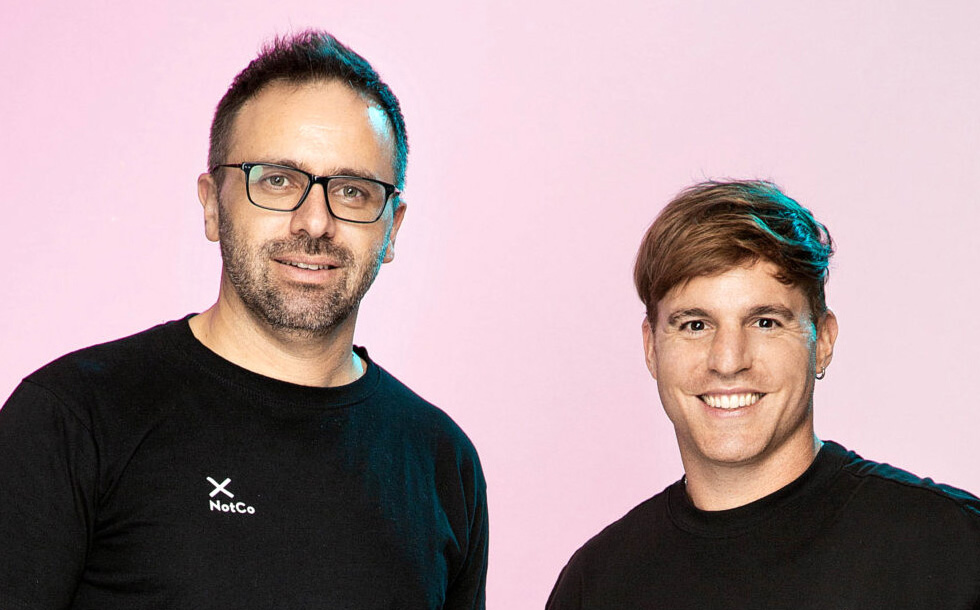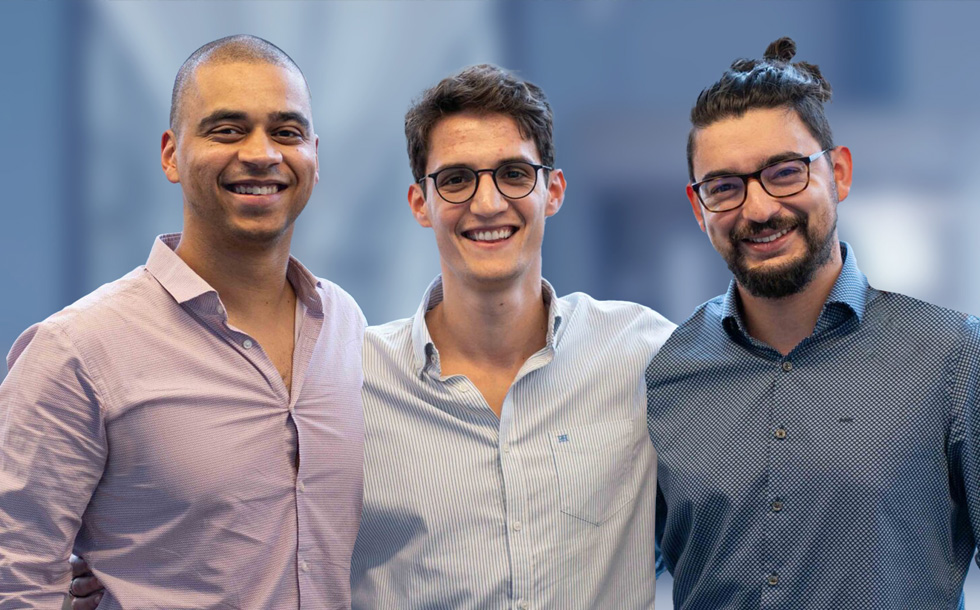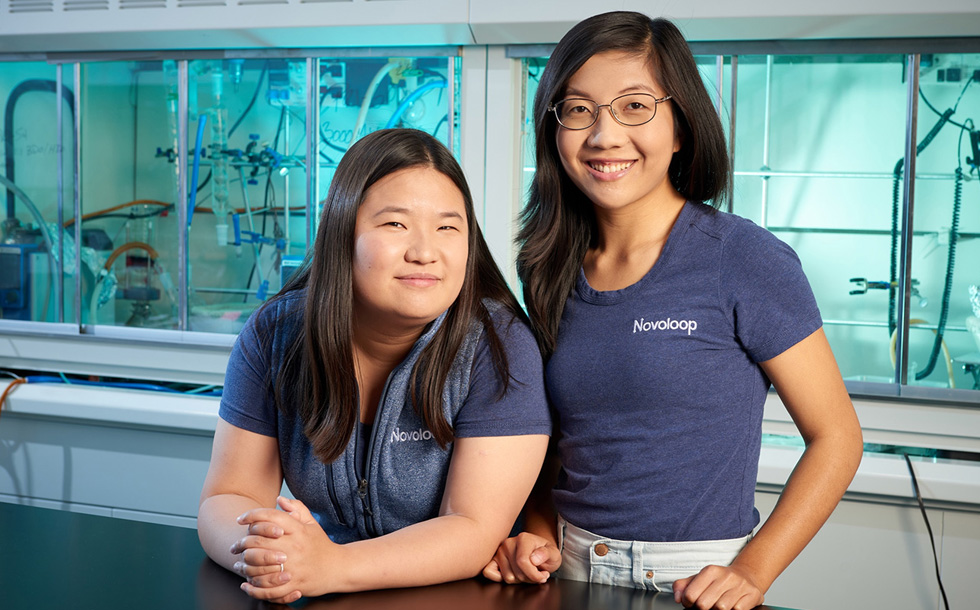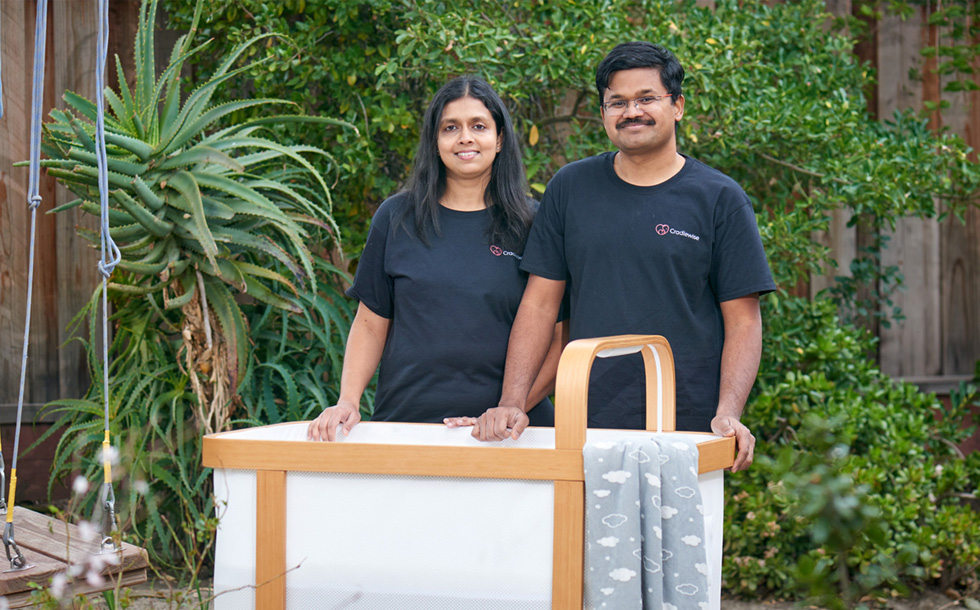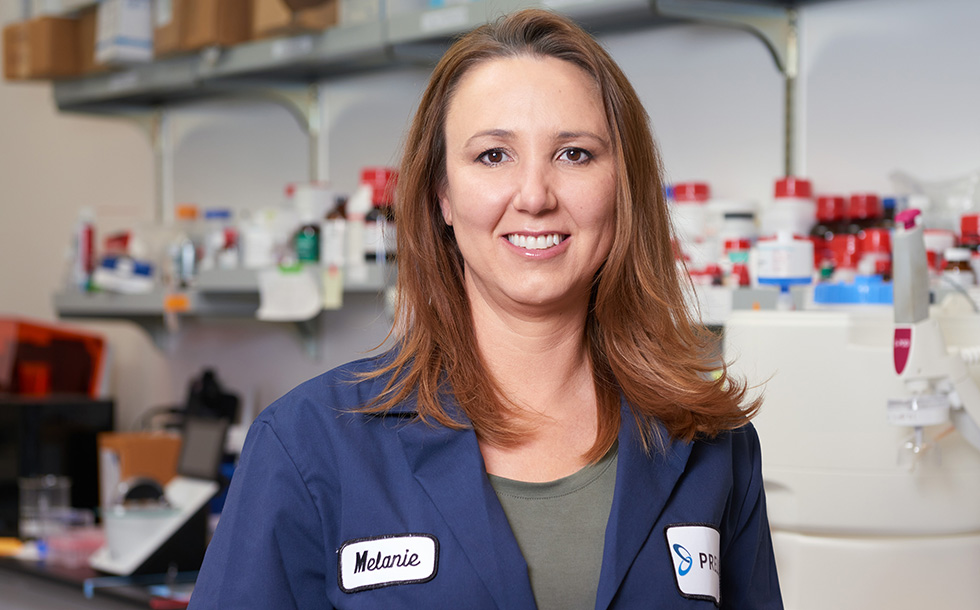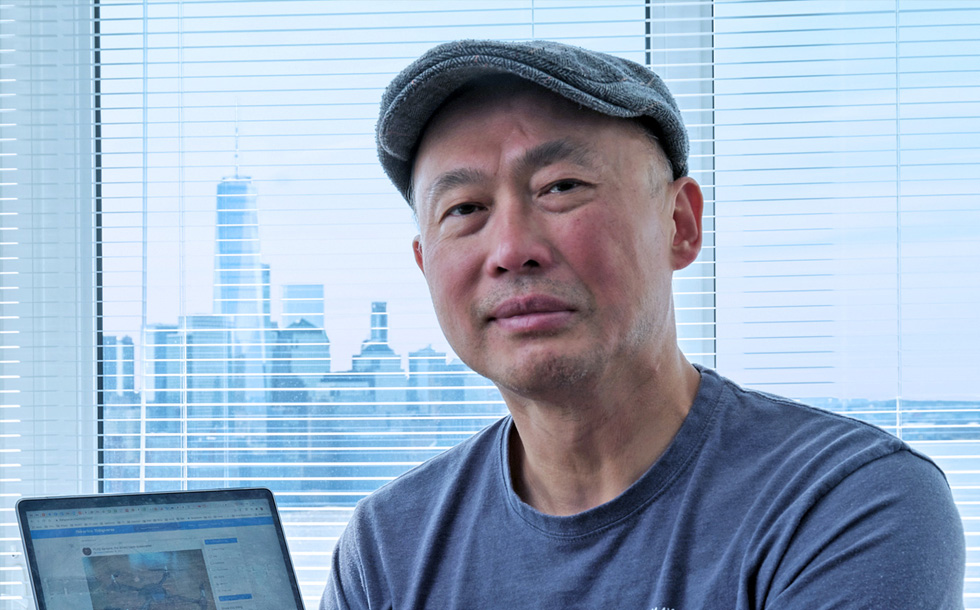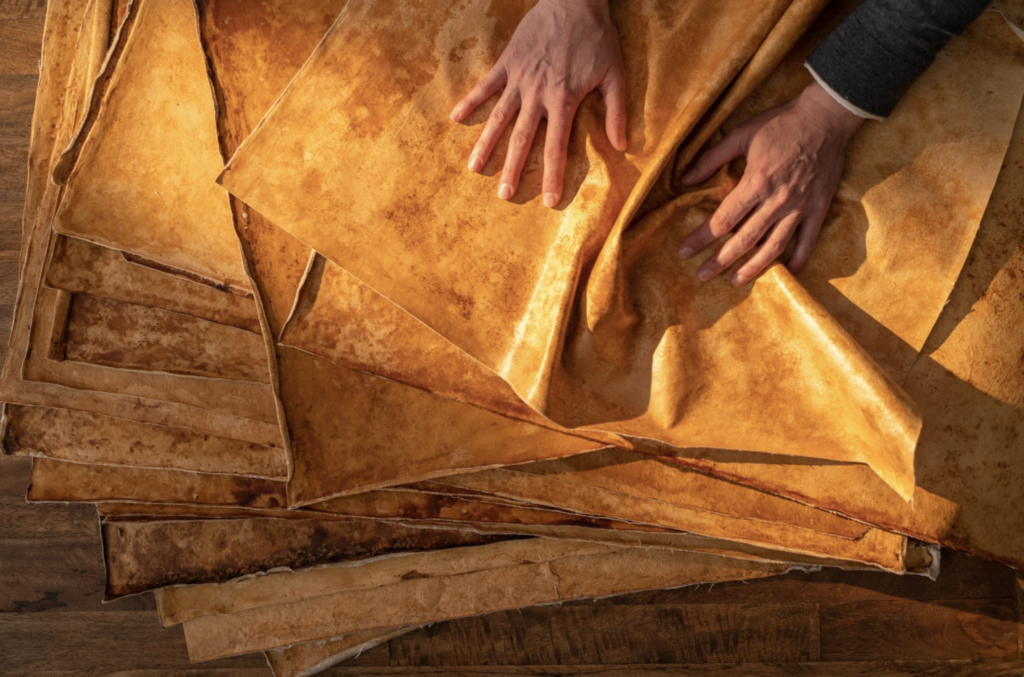
IndieBio’s mycelium-based “leather” maker MycoWorks (SF03 2016) was recently the subject of The New York Times spotlight, “Are Mushrooms the Future of Alternative Leather?”.
The article charts the company’s history beginning with artist Philip Ross’ use of mycelium, a root structure of mushrooms, in one of his exhibits in 2007. While preparing for the show, Ross met and collaborated with Sophia Wang, who was a Ph.D. student at the University of California, Berkeley, at the time. The two experimented with “mycotecture” materials created by manipulating mycelium for six more years before Ross joined up with Wang and co-founded MycoWorks in 2013.
MycoWorks creates material with the appearance and texture of leather but without any animal parts. The development process is significantly more sustainable, too, combining sawmill waste with mycelium to develop customizable thin sheets. The final product, Fine Mycelium, can then be finished by third-party tanneries, and does not require chromium, a toxic substance typically used for animal leather tanning.
The New York Times reported that MycoWorks, currently based in Emeryville, California, holds more than 75 patents and employs more than 160 people in the U.S., Spain, and France. The company has also secured partnerships with high-end fashion brand Hermès, furniture maker Ligne Roset, and General Motors’ investment arm GM Ventures.
Speaking at a MycoWorks exhibition showroom in New York, CEO Matthew Scullin remarked that Fine Mycelium “can achieve the same quality and performance as animal leathers without the need for any sort of plastics.”

